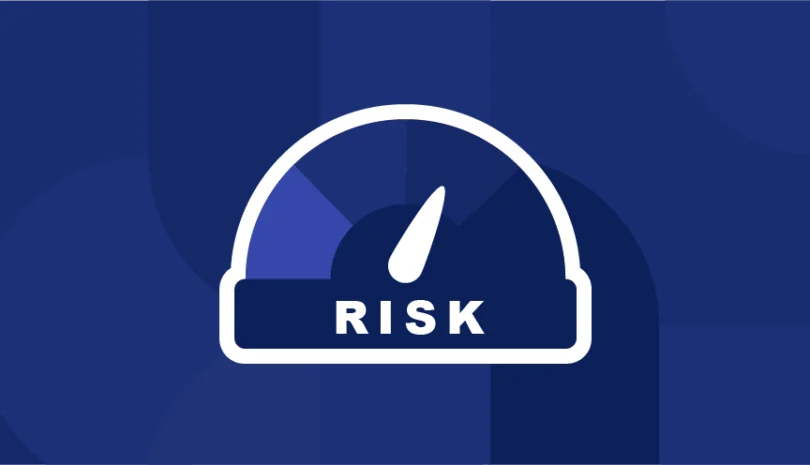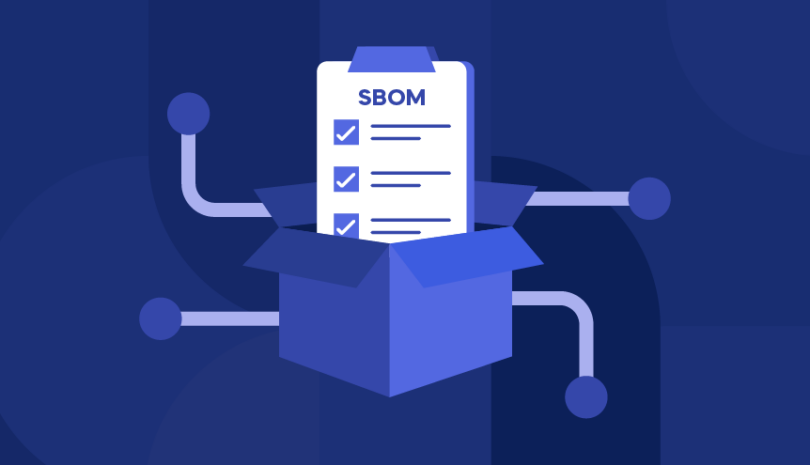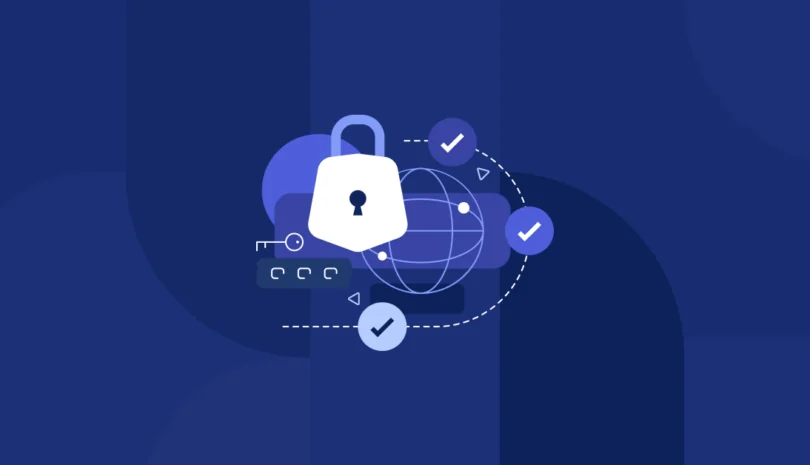Extended supply chains are a necessary evil in today’s complicated world. But as they become increasingly complex, it’s difficult to gain visibility into every party and assess their risk. Any third party can offer a way into your system for malicious actors.
The risk has been highlighted by several high-profile cyberattacks and data breaches. A 2023 attack on the MOVEit file transfer system affected over 2,600 companies, including Shell Oil, British Airways, and the State of Maine. In 2021, 1,500 companies were hit by a ransomware attack through Kaseya software, resulting in $70 million paid in ransom.
The only way to safeguard your business against cascading cyber threats is to tackle supply chain complexity head-on by understanding and managing Nth-party risk. In this article, we’ll discuss the challenges of managing complex supply chains, and share strategies, tools and best practices to help you succeed.
Defining Third-Party and Nth-Party Risk in Complex Supply Chains
Before we dive into strategies for managing supply chain complexity, let’s define the risks. Third-party risk refers to risks introduced by vendors, suppliers, contractors, partners, and service providers that interact directly with your organization. These could be financial, reputational, operational, regulatory, geographic, or cybersecurity risks.
Nth-party risk extends your risk considerably. It means any type of risk that could arise through the third parties that your third parties rely on, and their third parties, and so on. You could be working with an unknown number of fourth, fifth, and sixth parties in an ever-widening circle of vendors. The term Nth parties acknowledges the fact that you may not know how many levels of connection orbit your organization.
Nth parties significantly increase supply chain complexity. It’s challenging simply to know how many Nth parties participate in your supply chain, let alone assess their cybersecurity practices and verify that they can’t access any of your data. With Nth parties involved, it’s exponentially harder to understand the risks hidden deep within your supply chain.
The Growing Complexity of Supply Chains
Over the last few decades, supply chains have become longer, extended further around the world, and grown to include more parties than ever before. Globalization made it commonplace to work with vendors all over the world, and increasingly specialized technology means that the average company can’t meet all its tech support needs in-house. Malicious actors know that it’s difficult to keep track of so many parties, so they’ll target the weakest link to enter the supply chain, and then move through it.
Globalization and Interconnected Systems in Supply Chains
With companies sourcing materials and components from all over the world, supply chains have become both larger and more complex. Every vendor or supplier introduces a new potential vector for attack, and brings with it its own network of third parties with their own vulnerabilities. The further you get down the supply chain, the harder it is to maintain visibility.
Meanwhile, advanced technologies like IoT, AI, and cloud computing result in systems that are more interconnected. Today, a vulnerability in any Nth party becomes a vulnerability for everyone in the supply chain.
Cyber Risks in Supply Chains
Malicious actors are fully aware of supply chain complexity and are happy to exploit it for their own ends. They’ll target the weakest link, knowing that once they enter the supply chain they can work their way through it until they reach your systems.
Lower-tier suppliers often have security measures that are less robust than yours or your direct third parties, which makes them attractive entry points for cybercriminals. Security breaches in more distant parties can go unnoticed for months or sometimes years, giving cyber criminals plenty of time to cause significant damage to your systems.
The Challenges of Managing Nth-Party Risk
When it comes to complex supply chains, managing Nth-party risk is extremely challenging. For a start, you’ll struggle to gain visibility into anyone beyond your direct third parties.
Then there’s the challenge of assessing security standards and data handling policies for each party, which are likely to vary considerably and open up significant security gaps.
Additionally, several regulations require specific security standards from your Nth parties, which adds to the complexity and difficulty.
Lack of Visibility in Complex Supply Chains
For most organizations, it’s a challenge simply to see beyond your immediate suppliers. When you have zero or limited insight into the vendors used by your third parties, you can’t assess your risk landscape in an effective or comprehensive way.
You have no idea how many vulnerabilities are hidden from view, and you can’t evaluate security measures, check that Nth parties comply with regulations, or identify weak links that could be exploited by cybercriminals. These blind spots handicap you from proactively managing and mitigating risks that could expose you to serious threats.
Data and Security Gaps in Complex Supply Chains
What makes managing Nth-party risk even harder is the fact that each party in your supply chain may follow different security standards and data handling processes. This patchwork of varying protections creates potential vulnerabilities that can be exploited by cybercriminals.
Smaller suppliers might not have the resources to implement advanced security protocols, while larger ones might struggle to enforce compliance among their own third parties. Of course, the more parties there are in the supply chain, the harder it is to ensure uniform security measures.
Regulatory Compliance Adds to Complexity in Supply Chains
Just to make the situation more complicated, you need to handle compliance with assorted regulations and standards throughout your supply chain. Some regulations, like GDPR and HIPAA, obligate you to ensure that every party that handles sensitive data adheres to the same requirements.
This means that you need to know every party that has access to your data or networks where your data resides. You have to check that they store, process, and protect data in ways that meet relevant regulations, which could differ in various jurisdictions and regions.
Strategies for Managing Nth-Party Risk
Supply chain complexity makes tackling Nth-party risk very difficult. To succeed, you need to adopt the right strategies that restore your control over and visibility into the supply chain, and give you the tools to manage Nth-party risk in an ongoing way.
These include:
- Risk mapping and vendor discovery for the entirety of your supply chain
- Continuous monitoring and risk assessment for real-time insights into the risk landscape
- Accurate vendor risk scoring to prioritize the risks that need most immediate action
Risk Mapping and Vendor Discovery
A robust strategy for managing Nth-party risk begins with knowing who makes up your supply chain. This involves thoroughly mapping your supply chains to identify not only your direct vendors, but also fourth, fifth, and Nth parties.
You’ll need advanced supply chain management software and AI to track and record transactions and interactions across all levels of the supply chain. The right solution uses this data to build a detailed visualization of the entire supply chain network, so you can see the connections and dependencies between all parties.
Continuous Monitoring and Risk Assessment
Revealing everyone in your supply chain is a vital first step, but there’s more left to do. It’s not enough to conduct a one-off risk assessment for each vendor in your supply chain. You need to run continuous monitoring tools that provide real-time insights into the changing risk landscape.
These solutions track various indicators of risk, such as changes in vendor security postures or compliance status, and flag anything that could indicate a security threat. This way, you can take proactive measures to address vulnerabilities, respond quickly to breaches, and stay ahead of potential threats.
Vendor Risk Scoring
It’s important to use vendor risk scoring tools together with continuous monitoring and risk assessments. These solutions crunch data from risk assessments, compliance history, past incident response, and more to assign risk scores to every party in your supply chain.
Dynamic risk scores enable you to prioritize which risks require immediate action, promptly address critical vulnerabilities, and allocate resources more effectively. With risk scores that are constantly updated, you can evaluate and adjust your risk management strategies in response to the changing security situation.
Tools and Technologies for Complexity in Supply Chains
You can’t handle this level of supply chain complexity using manual processes and outdated techniques. It takes advanced tools and technologies to gain visibility into complex supply chains, carry out continuous monitoring and risk assessments, and apply relevant controls to ensure compliance.
Let’s take a closer look at solutions that use AI and machine learning (ML), platforms that centralize vendor risk management (VRM) activities, and tools to turn contracts into instruments for compliance and control.
AI and Machine Learning
Solutions that use advanced AI and machine learning (ML) technologies can automate the process of discovering Nth-party risks and map out intricate supply chains. They collect and crunch enormous datasets from across your supply chain, to deliver a detailed and dynamic visualization of all entities involved, from direct suppliers to distant subcontractors.
What’s more, AI and ML tools can continuously monitor your Nth parties to spot patterns and anomalies that may indicate potential vulnerabilities or security threats. They use historical data and emerging trends to predict and assess risks, allowing you to proactively address issues before they escalate.
Vendor Risk Management (VRM) Platforms
VRM platforms provide a centralized hub for organizations to manage, assess, and monitor vendors and extended networks. By enabling you to gather critical data about vendor performance, compliance, and security practices in a single location, they streamline the vendor assessment process and make it possible to analyze supply chain complexity more efficiently.
Additionally, VRM platforms deliver tools for continuous monitoring, so you can keep up to date about changes in vendor risk profiles and compliance status. They consolidate insights about all your vendors, including Nth parties, which enhances visibility and facilitates informed decision-making.
Contractual and Compliance Controls
As well as implementing advanced technologies, put your own contracts to good use. Every third-party contract should include specific clauses requiring vendors to maintain robust compliance and risk assessment processes for their own suppliers, together with ongoing monitoring for third-party networks and regular reports and vendor audits.
This extends responsibility for risk management beyond your immediate relationship, improves transparency, and enhances accountability throughout the supply chain ecosystem. Well-defined contractual obligations also help align all parties in their commitment to risk management, which reduces the risk of vulnerabilities arising downstream.
Best Practices for Managing Supply Chain Complexity
As you begin to tackle supply chain complexity, you’ll want to implement these best practices. They include:
- Establishing a clear line of risk ownership, with defined roles for managing Nth-party risks across the organization;
- Implementing rigorous due diligence processes when onboarding new vendors, which require them to vet their own vendors;
- Setting up ongoing training for your employees to ensure that they are aware of and know how to deal with complex supply chain risks.
Let’s take a closer look at these best practices for managing supply chain complexity.
Establish Clear Risk Ownership
It’s vital to clearly assign specific individuals or teams with responsibility for managing different aspects of third- and Nth-party risks across the organization. It helps to prevent gaps in oversight and makes sure that everyone understands their role in monitoring and mitigating Nth-party risks.
As part of this approach, it’s best to appoint risk managers to oversee extended supply chain risks. They’ll be responsible for regularly assessing vendor performance, conducting audits, and ensuring compliance with regulatory requirements. They also help facilitate communication with different business departments, to integrate risk management strategies into overall business operations.
Vendor Due Diligence in Complex Supply Chains
Vendor due diligence is always crucial, but it’s particularly important when dealing with complex supply chains. It needs to extend beyond assessing each new vendor’s security practices and compliance with relevant regulations, to include evaluating their ability to vet and monitor their own third parties.
Including third-party risk assessments as part of your vendor onboarding processes helps you to improve risk assessment throughout the supply chain. Request that vendors establish ongoing risk monitoring for all their third parties, to give you better supply chain visibility and lower your exposure to Nth-party risk.
Ongoing Training and Awareness
Like every aspect of business risk, successful Nth-party risk management demands knowledgeable and alert employees. Workers in all departments need to understand the vulnerabilities that can arise from Nth-party relationships, and have the knowledge and skills necessary to recognize and respond to extended supply chain risks.
This requires integrating vendor risk awareness training into your existing training programs. They should include tailored modules about risk assessment for specific cybersecurity threats and compliance requirements, real-world case studies that demonstrate the impact of supply chain risks, and simulations to prepare employees with appropriate response strategies.
Managing Supply Chain Complexity
There’s no way back to the days of simple business networks when you knew everyone you worked with. Complex supply chains are an unavoidable element of modern business, so you can’t ignore Nth-party risk. Today’s interconnected business environments make Nth-party risk a serious threat, with every vendor bringing their own collection of vendors with unknown vulnerabilities and unseen weaknesses.
Every organization needs to adopt proactive strategies, proven best practices, and advanced tech solutions that give them visibility into and control over Nth-party risks. Assess your current vendor management practices to make sure that they are still effective for today’s increased levels of supply chain complexity.
It might be time to adapt your strategies, and/or adopt next-generation continuous monitoring solutions like Panorays that use AI and ML to manage both third- and Nth-party risks.
Ready to strengthen your Nth-party risk management? Get a demo of our risk management platform today.
Supply Chain Complexity FAQs
-
There are a number of factors that affect supply chain complexity. They include:
- Increasing globalization, with companies sourcing components and services from around the world
- Rising tech advances introducing new systems that require specialized service provision
- Varying regulatory standards across different regions
- The diversification of suppliers into a patchwork of vendors with different practices and performance standards
-
You can streamline processes and consolidate your supply base to work with fewer, more reliable partners, but there are limits to how far you can reduce supply chain complexity. It’s better to focus on improving visibility into your supply chain, using ongoing monitoring and reliable, real-time risk assessments.
-
Successfully managing a complex supply chain requires a combination of advanced technologies and the right risk management strategies. It involves:
- AI-powered supply chain discovery
- Strong vendor onboarding
- Robust contractual obligations that require vendors to vet and monitor their own third parties
- Continuous monitoring and risk assessments



